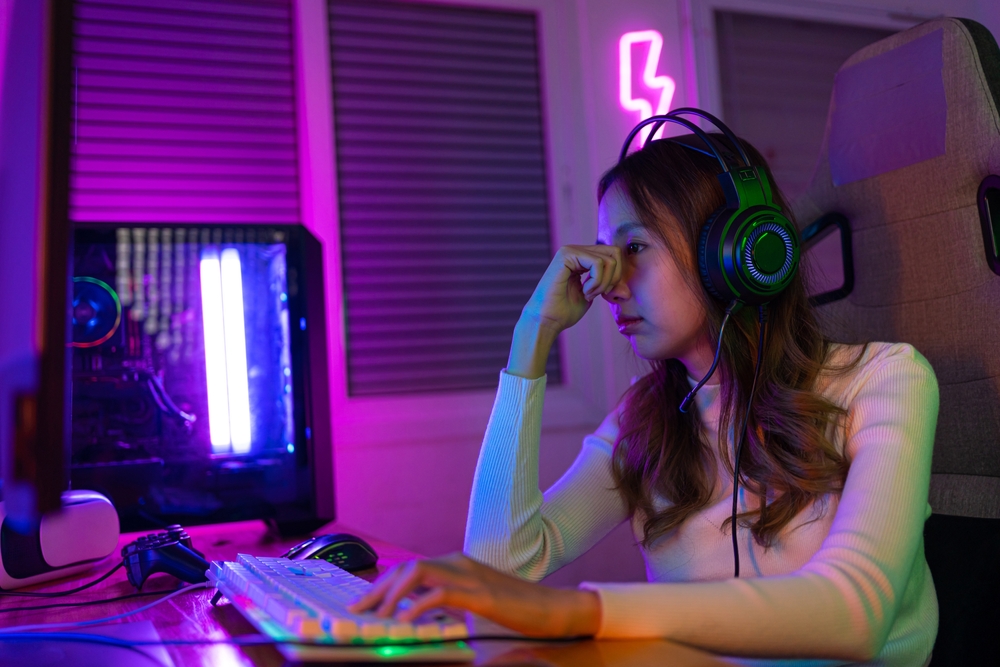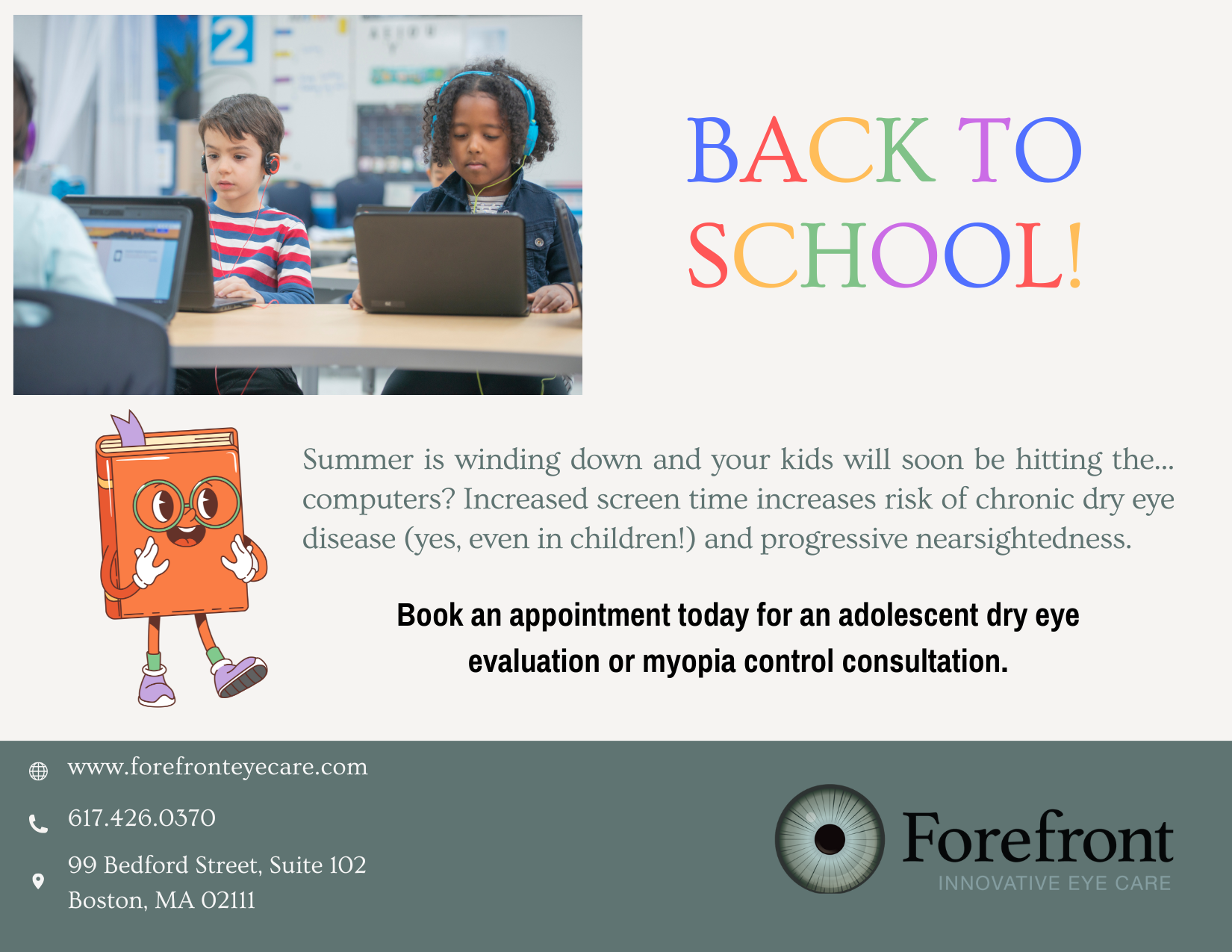
The blink of an eye is an extremely complex activity. Controlled by our autonomic nervous system, blinking is the eye’s primary defense. The eyelids are maestros of an intricate, physiologic orchestra that plays out on the ocular surface.
Each time the upper and lower eyelids touch, the tears are reconstituted. The tears are necessary to protect the underlying ocular tissues, including the cornea (the clear dome of tissue that is like a "window"), the white part of the eye (comprised of the three separate layers), and the inner linings of the eyelids. The tears comprise a thin film composed of interdependent layers produced (mostly) by three separate structures.
The first, innermost layer is a sticky mucus produced by specialized structures called goblet cells on the surface of the eye. This mucus acts like a Velcro layer and complexes with the second “aqueous” layer secreted by the lacrimal gland, which sits near the outer eyebrow. The aqueous solution contains thousands of molecules that mediate inflammation, defend against invaders, provide nutrition, and maintain homeostasis.
The third and outermost layer is a dynamic, superficial oil slick, just nanometers thick, produced by the oil glands located in the eyelids. This layer prevents the evaporation of the underlying aqueous and mucus complexes. These three structures, coupled with the action of a complete blink, maintain the health of the ocular surface.
A healthy tear film will endure for about 15 seconds before it evaporates, and the “interblink interval” is programmed by the nervous system to occur at approximately 12-second intervals. In this way, the integrity of the tear film is maintained, and the underlying structures are protected from evaporation. Without blinking, debris would not only enter the eye but fail to be removed from it; the tears would run down our cheeks; and the surface of the eye would suffer pathologic desiccation. Our obsession with all things digital corrupts this most fundamental activity.
Donald Korb is one of the few people in the world who has thought a lot about blinking. A Boston native and world-renowned optometrist, inventor, scientist, and entrepreneur with over 55 patents to his credit, hundreds of publications, and several successful startup enterprises, he has a reputation for harboring immense curiosity teamed with uncanny observational skills. The son of a physician, he was born in Dorchester, MA and attended Boston Latin School.
While still underage, he conned his way into working as a painter in the Quincy shipyard. After college, he attended the New England College of Optometry, where he was a precocious student. In 1950, a newly minted optometrist who was smart and ambitious, Korb, purchased the well-established practice of Dr. Frederick Farnum, which had been established in 1920. That storied practice was located on Boylston Street, across from the famous Boston Public Garden, just steps away from where the current Martin Luther King memorial statue now sits. During his early career, Korb earned an international reputation as a contact lens pioneer, developing several of his own designs and eventually founding a company called CSI, which was one of the first to produce commercially available soft contact lenses.
A pivotal observation he published in 1980 changed the trajectory of his career and, eventually, the field of dry eye disease. In this article, he correctly observed that patients with contact lens intolerance manifested a problem with the oil (meibomian) glands embedded in the eyelids, a condition termed meibomian gland dysfunction (MGD). His scientific focus quickly shifted away from contact lenses to understanding the physiology of these largely ignored eyelid structures. MGD is now universally acknowledged to cause most dry eye disease and has, as its root cause, poor blinking.
There are over 1,000 scientific articles that link the use of digital devices to signs and symptoms of dry eye. Staring at a screen is the culprit, but it is helpful to understand why this occurs. The visual cortex is the part of our brain where the perception of sight actually occurs. It is a dominant force, with incoming and outgoing projections to fifty percent of brain structures. It relies on an information superhighway enabling computational analysis for learning and complex problem solving. The eyes, while amazing structures in their own right, are merely data collectors for the brain. As far as the visual cortex is concerned, blinking represents an annoying stop sign that gets in the way of the data stream. It is a well-established fact that concentration on any task corrupts the frequency and quality of blinking.
Working on a math problem, driving on a crowded highway, or reading an interesting article will all decrease the frequency of blinking by an average of two-thirds. Think about it: every time the eye closes, the rhythm of data input to the visual cortex is interrupted, devolving from continuous to staccato. In addition to the blink frequency, the completeness of the blink is also compromised. Instead of the upper and lower lids touching (which, by the way, is the only way that tear film is replenished and the meibomian glands are expressed), the blink will often be incomplete. Partial blinking is the visual cortex’s way of surreptitiously maintaining the flow of photons beyond the pupil so they can interact with the retina, where visual processing begins. In short, partial blinking prevents corruption of the data stream.
Thirsty for information, the visual cortex happily suppresses the pre-programmed impulse to blink every 12 seconds, sacrificing ocular surface homeostasis for bandwidth.
While this feature of the visual system is highly conserved, several important factors contribute to increased blink corruption with digital devices that do not occur with other types of media. One is the position of the screen. When reading a book or working on a desk, the upper eyelid is depressed, causing the eyes to be partially closed. This has the effect of a) decreasing the relative surface area of the exposed ocular surface, thereby thickening the tear film, thereby limiting the effect of evaporation, and b) reducing the distance that the lids must traverse for a complete blink to occur.
Secondly, compared to written text, the content of digital devices tends to be more visually compelling, commanding our attention. (As an aside, this feature may also be one of the reasons why it is so easy to become addicted to digital content; after all, we are stimulating our most dominant sense.). The effect is that when using screens, physical responses occur that do not happen with other methods of interacting with our visual environments.
Korb’s epiphany was the realization that obstruction of the oil (meibomian) glands, which occurs with partial blinking, plays a critical role in the pathogenesis of dry eye disease. When the meibomian glands are incompletely expressed, the oil they produce eventually complexes with dead skin cells, white blood cells, cosmetics, and lid margin bacteria. The melting temperature of the contaminated oil increases, and instead of the consistency of olive oil, a tough, stubborn plug, much like earwax, forms. This hardened material cannot spread over the underlying water or mucus phase to protect it from evaporation.
With chronic plugging, the meibomian glands eventually undergo irreversible atrophy, and the evaporation of the tears is permanently accelerated. Over time, the characteristic inflammatory sequelae associated with dry eye manifest, namely: cellular compromise, tear film chemistry derangement, and corneal nerve abnormalities. Increasing symptoms of burning, tearing, discomfort and contact lens intolerance ensue. Korb understood years before computers dominated our society that poor blinking was the root cause of most dry eye disease.
Traditionally, dry eye disease afflicted white, post-menopausal women. Alarmingly, young adults and adolescents of both sexes and all races are increasingly exhibiting evidence of ocular surface abnormalities as well as meibomian gland tortuosity and atrophy. Younger populations are essentially suffering from accelerated, irreversible aging of their meibomian glands. One hypothesis for this development is the increased use of electronic-based media, which causes partial blinking vis-à-vis the visual cortex.
The COVD-19 pandemic catapulted the already-increasing digitization of education and workplace platforms to levels never seen in our history. Simultaneously, digital adventures swiftly subordinated in-person interactions as the cornerstone of our social experiences. This pandemic-fueled trend shows no signs of slowing due to the continued and ubiquitous integration of computer-assisted platforms into our society.
Early problems with the meibomian glands are “non-obvious” and proceed undetected in early stages without special cameras to image the eyelids. With the increased recognition of this root cause of dry eye, industry has responded by making instruments available to detect this problem. However, most eye doctors do not have these devices, and screening is not yet the standard of care for routine examinations. Because occult MGD can be asymptomatic and has few clinical signs, treatment is not advocated, and the condition progresses. (Figure 1)
Meibomian gland stasis, caused in most cases simply by poor blinking and/or a lack of prophylactic hygiene practices, causes irreversible atrophy of a structure critical to tear film integrity. Left untreated, the inescapable inflammatory cascade can result in ocular surface inflammation, which, over time, risks corneal nerve hypersensitivity or hyperalgesia, which is exceedingly difficult to manage. In the setting of a rapacious visual cortex that will always prevail over ocular surface homeostasis, it will be challenging to completely prevent evaporative dry eye with our collective reliance on screens.
The significance of routine screening for symptoms of eye discomfort in younger populations cannot be overemphasized. Globally, dry eye disease is already one of the most common medical eye problems in adults. This condition has been shown in multiple studies to both reduce work productivity and negatively impact quality-of-life metrics. Early onset in pediatric populations will result in a longer lifetime fraction, increasing the severity and expense of dry eye disease.
Early intervention through education about eyelid hygiene and the importance of blinking and taking visual breaks is critical for people of all ages. Equally important is the deployment of screening tools, which can cheaply and easily identify people at risk for developing evaporative dry eye.
Our interactions with machines may have physical consequences, some of which, like the blink, may seem unimportant in the moment. On average, we blink 16,800 times per day, or 1,050 times per hour. If that frequency decreases by two-thirds due to concentration or compelling content, the blink rate is reduced to 346 times per hour, and many of those blinks will be incomplete.
Based on the most current data, the average number of hours spent on an internet-connected screen is 6 hours and 58 minutes. Digital devices are unique in that we willingly interact with them for extended durations, nearly every day. It is therefore unsurprising that screen use causes dry eye disease. Voluntarily modifying our habits while using digital devices is not easy and may be impossible. After all, the visual cortex hijacks eyelid function for the sake of information.
Most critically, personal choices about how we use and require others to use technology matter. Because of the immense entertainment, intellectual, and productivity value computers have bestowed, humans repeatedly prioritize screen use, often sacrificing physical and in-person social and work experiences. These are both intimate and macro-economic decisions that affect all of humanity, from the individual who will not moderate their screen use to educators who advocate digital learning platforms, software engineers who design addictive content, business leaders who force employees to use Zoom platforms instead of conference calls, doctors who do not screen for a problem that they know is widespread, and politicians who fail to legislate common-sense guardrails.
Each small decision that we make, like the solitary and seemingly inconsequential blink, taken on a global scale, has enormous impact. It is increasingly clear that dry eye disease in children and young adults represents a widespread occult public health problem that is likely to have significant impacts on quality of life, work productivity and health care expenditures in the near future.










